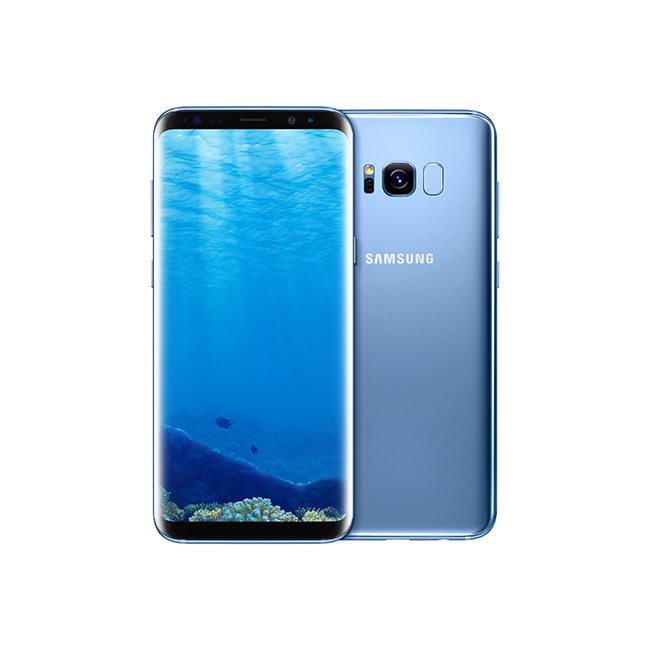Carrier aggregation, 4×4 MIMO, 256 QAM, LTE-U, HPUE and 5G are just some of the support technologies claimed by T-Mobile, Sprint and AT&T.
Samsung’s launch of its latest Galaxy S8 and S8+ smartphone models is sure to have an impact on the device market, but for domestic wireless carriers the new devices are set to unleash recent – and ongoing – network enhancements.
T-Mobile US noted the devices will be its first smartphone to simultaneously tap into the carrier’s 4×4 multiple-input/multiple-output antenna technology, carrier aggregation and 256 quadrature amplitude modulation transmission scheme. The carrier explained the technology cocktail can support network speeds of nearly one gigabit per second.
T-Mobile US late last year touted network speeds associated with the trio of technologies, with internal testing on an “unreleased handset” showing peak LTE speeds of 979 megabits per second. Where customers will actually be able to experience those speeds is still somewhat clouded as the carrier has noted its 4×4 MIMO was available in more than 300 markets, though no indication on the reach of all three technologies combined.
LTE-U support
Another first for the Samsung devices will be their support for T-Mobile US’ LTE-Unlicensed work, which will allow the device to tap into the unlicensed 5 GHz spectrum band to bolster network speeds and enhance coverage. The carrier last month said it had begun deploying support for the technology on the heels of the Federal Communications Commission certifying the first round of LTE-U devices.
T-Mobile US’ LTE-U plans involve the use of 20 megahertz of unlicensed spectrum in the 5 GHz band to provide additional LTE capacity for the carrier. The carrier explained the technology can “intelligently tap into and share underutilized unlicensed spectrum without affecting other users on the same band, including those using conventional Wi-Fi.”
T-Mobile US initially began testing LTE-U with Qualcomm last May, noting the tests involved up to 10 small cells and access points, with mobile units that were receive-only at 5 GHz, but able to transmit on LTE Band 4. Qualcomm had previously established a test regime with Verizon Wireless early last year.
The use of LTE-U has been somewhat controversial as proponents of unlicensed spectrum raised concerns over licensed operators tapping into spectrum initially set aside for use by diverse devices. Those concerns were addressed late last year following release of a test plan by the Wi-Fi Alliance.
The Samsung devices are also embedded with support for the AWS-3 spectrum band, with that capability first seen on the LG V20 device launched last year. T-Mobile US noted the AWS-3 spectrum, which is in the 1.7/2.1 GHz bands and is in the process of being migrated from use by the Department of Defense, will be used to provide additional capacity for its LTE service.
T-Mobile US spent just under $1.78 billion on winning licenses during the Federal Communications Commission’s record-setting Auction 97 proceedings. The auction itself raised $44.9 billion in gross proceeds for 50 megahertz of licensed and 15 megahertz of unlicensed spectrum spread across the 1.7/2.1 GHz bands.
Sprint finds more HPUE support
The Sprint version of the new Samsung devices includes support for the carrier’s high performance user equipment technology, which it claims can extend coverage of its 2.5 GHz-based TDD-LTE network by up to 30%, or to nearly match the coverage characteristics of its LTE network using the 1.9 GHz spectrum band.
The enhancement, which was recently certified by the Third Generation Partnership Project, comes from a power upgrade in the device designed to allow for greater uplink connectivity support. The new power class 2 standard has garnered support from China Mobile and Sprint’s parent company SoftBank; chipset vendors Qualcomm and MediaTek; and device makers Samsung, ZTE, LG, HTC, Motorola and Alcatel.
In announcing HPUE late last year, Sprint CTO John Saw noted that despite the increased transmitting power from within the device, there was virtually no impact on battery performance. Notably absent from the HPUE device support list is Apple, though the carrier does note it expects the HPUE technology to be in all new devices in the next two years.
The HPUE technology itself is currently limited to LTE band class 41, which is a time division duplexing band class for the 2.5 GHz spectrum band. Band class 41 has garnered support from a number of telecom operators working through the Global TD-LTE Initiative.
The recently launched LG G6 device was the first Sprint handset to support the HPUE technology.
AT&T hints at 5G
AT&T was a bit more forward looking with its network potential, noting the Samsung S8 models would be “some of the first devices able to deliver ultra-fast wireless network speeds from AT&T when we launch the AT&T 5G Evolution markets.” Those markets are currently limited to Indianapolis and Austin, Texas, which the carrier earlier this year said would be enhanced “in the coming months.”
AT&T’s 5G Evolution plans were recently launched under the Network 3.0 Indigo banner. The program includes plans for network densification, carrier aggregation and license assisted access technologies, with initial network speeds of up to 400 Mbps, reaching up to 1 Gbps by year-end.
The test beds in Austin and Indianapolis are said to include dedicated outdoor and indoor testing locations that will include “flexible infrastructure to allow modifications and updates as 5G standards develop,” and include spectrum support below 6 GHz, and in the 28 GHZ and 39 GHz bands.
Austin is also set to house a pair of new 5G test beds designed to support ongoing work, trials using a fixed wireless 5G connection and support for AT&T’s previous announced plans to stream DirecTV Now and enhanced broadband services to residential and small- to mid-sized businesses in the area. Austin is home to the carrier’s previously announced business customer trial using millimeter wave spectrum.
Bored? Why not follow me on Twitter.

